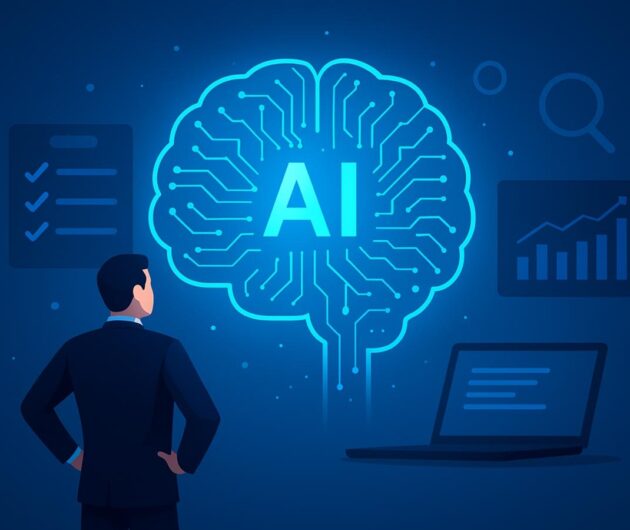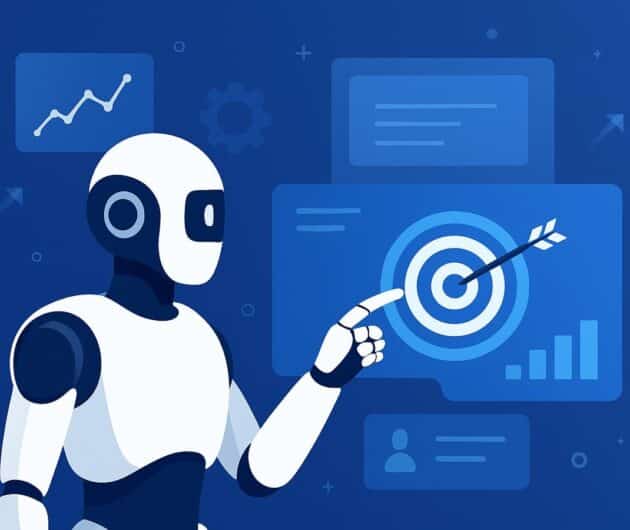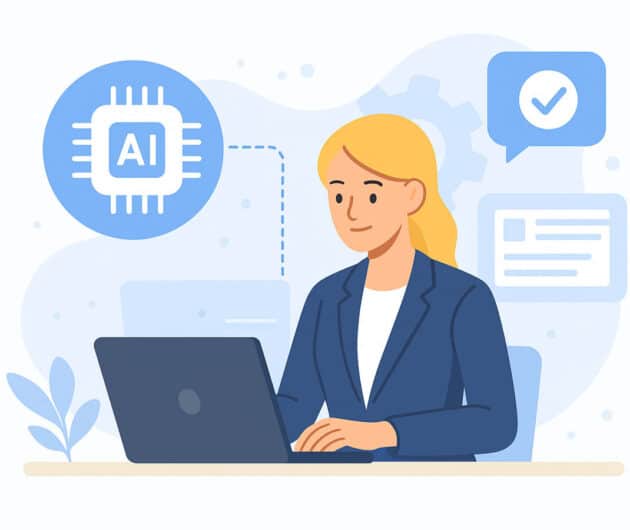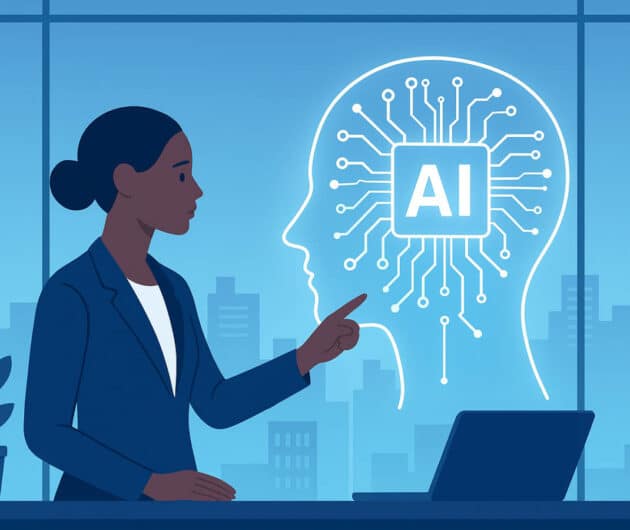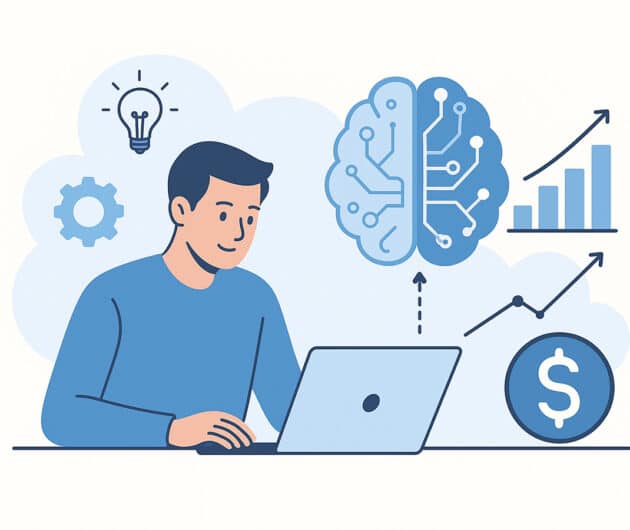AI Agents in Enterprise: Use Cases, Benefits & How to Implement
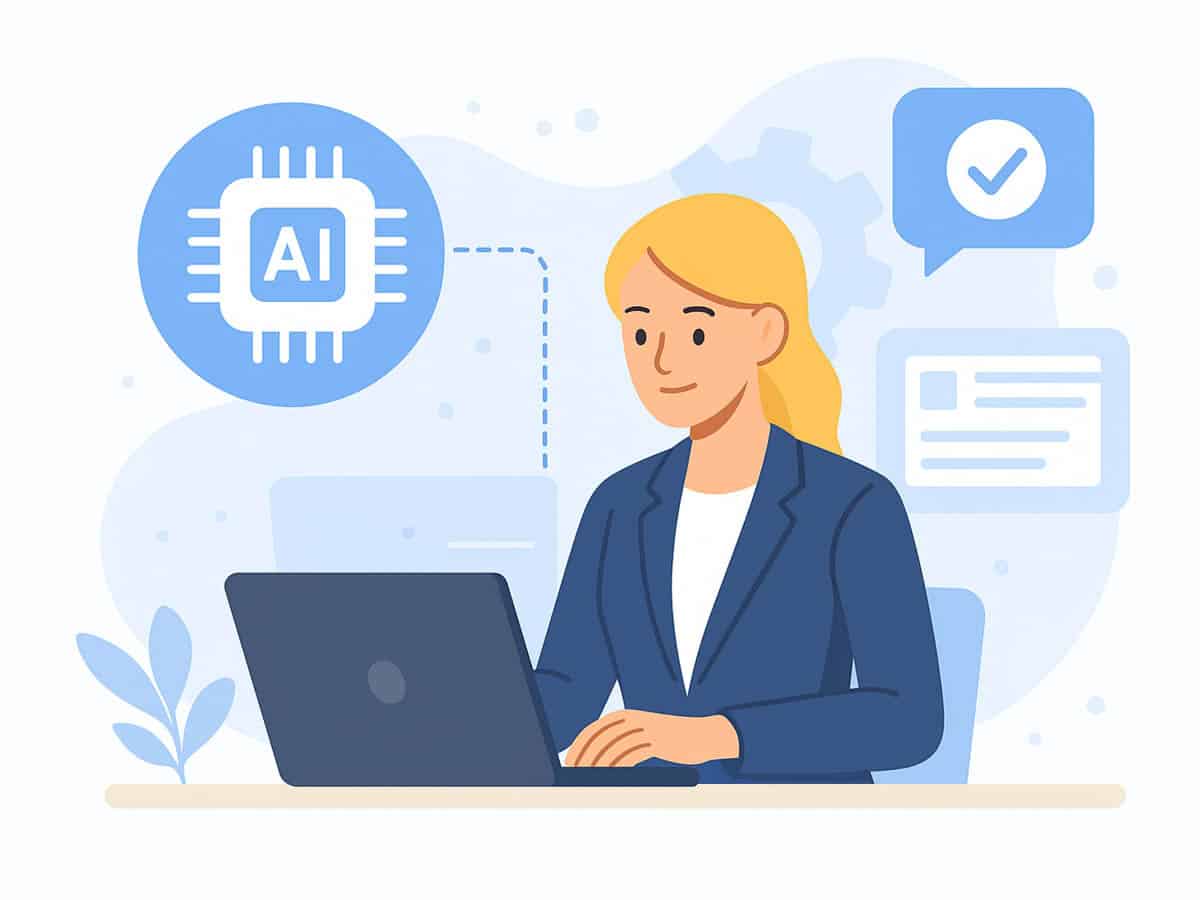
-
Jignesh Nakrani
- October 17, 2025
- 7 min read
Artificial Intelligence arrived at enterprise doors a decade ago. In 2024–2025, it stopped knocking and began opening rooms. What’s different today isn’t just smarter models — it’s agents: software that reasons, plans, and acts across systems. These are not single-response chatbots. They are goal-oriented actors that chain together knowledge retrieval, reasoning, and system actions to finish real business tasks — from closing support tickets to coordinating cross-team launches.
This shift happened for three reasons at once:
- Models matured: generative models went from “clever demo” to reliable workhorses that can summarize, translate, draft, and reason at scale.
- Tooling improved: vector-search, function-calling, secure connectors, and MLOps infra now let agents access enterprise data and external services safely.
- Business pressure increased: executives want measurable ROI from AI, not proof-of-concept artifacts. Agentic systems promise automation across multi-step workflows, which is where real value lives.
The result: enterprise leaders moved from “should we?” to “how fast can we?” Surveys show generative AI adoption has exploded across industries, and executives are now actively piloting or deploying agentic AI to solve practical problems like support automation, finance reconciliation, and developer productivity. These are not theoretical — they’re measurable shifts in spending, organization design, and production software.
If you’re reading this, you probably need to answer two questions: Where can agents move the needle in my business? And how do I do it safely and at scale? This post answers both — with implementation patterns, governance guardrails, and real-world examples that you can apply.
1. What Are AI Agents in Enterprise?
An AI agent is a piece of software that takes a human goal (often stated in natural language), gathers or retrieves the information needed, reasons about the required steps, calls systems or tools, and then acts or reports results. Repeatable, observable, and auditable.
Key features that make AI Agents stand out:
- Goal-driven: They focus on achieving clear objectives, such as resolving a customer issue or optimizing workflows.
- Multi-step orchestration: They plan and execute sequences of actions, rather than just performing one task.
- Tool-enabled: They connect to external systems, update databases, trigger workflows, or run scripts automatically.
- Context-aware: They remember relevant information across tasks, ensuring decisions are consistent and informed.
- Human-in-the-loop: For sensitive tasks, they can escalate or seek approval, combining intelligence with accountability.
By thinking, adapting, and acting intelligently, AI agents don’t just automate—they help businesses work smarter, faster, and more efficiently.
2. Key Benefits of AI Agents in Enterprise
Here’s a breakdown of the core business benefits — and why they matter for decision-makers.
• Measurable time and cost savings
Agents replace repetitive human steps across workflows: triage, initial research, standard responses, and routine reconciliations. Pilot programs often show a 30–70% reduction in time spent on targeted tasks, depending on process complexity and integration depth.
• Scale and consistency
Agents apply the same rules, templates, compliance checks, and brand voice across thousands of cases. This reduces variance in outcomes and increases predictability in service levels.
• Faster decision cycles
By aggregating data from multiple systems and running scenario analysis, agents give humans decision-ready summaries, cutting meeting hours and accelerating approvals.
• Higher customer satisfaction
Context-aware agent responses (RAG + memory) deliver quicker, personalized service. For contact centers and self-service, this often translates to improved NPS/CSAT.
• Developer and knowledge worker acceleration
Internal developer agents can scaffold code, generate tests, and triage bugs. Knowledge workers get instant briefs, slide decks, and first drafts — freeing senior talent for high-value work.
• New revenue and product opportunities
Agents can be embedded in customer-facing products as “smart assistants” or service layers (e.g., virtual relationship managers), unlocking premium services.

3. Real-World Use Cases of AI Agents in Enterprises
AI agents are no longer locked inside experimental labs or pilot sandboxes. In 2025, they’re showing up in revenue dashboards, compliance logs, and customer feedback surveys. The world’s most agile enterprises are quietly building internal armies of digital coworkers — specialized AI agents that never sleep, learn from every interaction, and continuously improve.
Let’s dive into where these agents are already proving indispensable.
I. Customer Experience Agents — From Reactive Support to Proactive Delight
In 2023, chatbots were a support accessory. By 2025, customer experience AI agents will have become a frontline workforce.
- What they do: They listen, learn, and act — detecting intent, pulling knowledge from product databases, crafting empathetic replies, escalating intelligently, and even following up days later.
- Results: Enterprises deploying proactive service agents report up to 40% reduction in average handle time and 35–50% lower customer churn.
- Example: A telecom giant recently deployed multi-agent systems that detect customer frustration in tone, trigger a retention workflow, and offer contextual upgrades before the customer even thinks about canceling.
II. Revenue & Sales Agents — Scaling Human-like Selling
Sales has always been part science, part instinct. AI agents are now adding the missing ingredient: precision at scale.
- What they do: Enrich leads, personalize outreach, analyze call transcripts, score opportunities, and generate follow-up cadences.
- Impact: Companies using sales AI agents have seen 2–3x more qualified leads and 15–25% shorter sales cycles, according to 2024 enterprise AI adoption surveys.
- Example: One SaaS firm uses “closer agents” that automatically draft next-step emails based on call transcripts, while a “coach agent” analyzes seller tone and confidence during live pitches.
These agentic sellers never miss a follow-up, never forget context, and continuously adapt to customer personas — turning every rep into a data-driven strategist. Implementing such agentic systems often involves expert AI development services to ensure they operate reliably across complex enterprise environments.
III. IT, DevOps & Cybersecurity Agents — The Invisible Engineers
IT operations are a perfect playground for agentic automation. Instead of waiting for humans to investigate alerts, enterprises are building AI ops agents that self-diagnose issues and sometimes fix them before anyone notices.
- What they do: Detect anomalies in logs, summarize root causes, suggest patches, and even trigger remediation scripts under human supervision.
- Impact: In early deployments, these agents reduced incident response times by 60% and saved thousands of human-hours in manual triage.
- Example: A fintech startup integrated a fleet of AI ops agents that monitor production clusters 24/7. When a latency spike occurs, the system automatically investigates, provides a comprehensive incident report, and pings the on-call engineer with the suggested fix.
These “digital engineers” are redefining uptime economics — transforming IT from reactive maintenance to predictive optimization.
IV. Finance, Risk & Compliance Agents — The Tireless Auditors
In industries where a single misstep can cost millions, AI compliance agents are becoming indispensable.
- What they do: Reconcile invoices, verify transactions, flag anomalies, cross-check contract clauses, and prepare audit summaries.
- Impact: Global banks using audit agents report up to 80% reduction in manual review effort and near-instant anomaly detection.
- Example: One European bank operates a team of “risk sentinels” — AI agents that monitor transaction streams in real-time, correlating unusual activity with known fraud patterns and alerting analysts before any loss occurs.
Unlike humans, these agents never tire, never overlook edge cases, and always log every decision — a dream come true for regulators and auditors alike.
V. Enterprise Knowledge & HR Agents — The Smart Colleagues Everyone Wants
Internal knowledge is every enterprise’s hidden goldmine — but also its biggest mess.
AI knowledge agents are finally taming that chaos.
- What they do: Index internal docs, extract answers, create personalized onboarding plans, and draft reports in seconds.
- Impact: Enterprises using internal AI knowledge agents have seen employee onboarding times drop by 60% and internal support queries resolved 10x faster.
- Example: A global manufacturer deployed “policy agents” that answer complex HR or IT questions instantly, saving hundreds of hours per week across departments.
These aren’t dumb bots parroting FAQs — they’re context-sensitive copilots that evolve with the organization, turning every employee into an expert.
You May Also Like: Scaling AI: Cost-Effective Strategies For Enterprises
4. How to Implement AI Agents That Drive Enterprise Results
Many companies fail not because the technology is weak, but because the approach is.
Here’s a battle-tested roadmap for building enterprise-grade AI agents that deliver measurable ROI.
Step 1: Start With Purpose, Not Tools
Don’t ask, “What can we automate?” Ask, “What slows us down?”
Pick workflows that are manual, repetitive, and data-rich — support tickets, document reviews, or routine analytics. These are the easiest to scale and measure.
Step 2: Design a Human-AI Collaboration Model
Agents shouldn’t replace people; they should amplify them.
Design “guardrails” where humans supervise high-stakes decisions. Start with human-in-loop for oversight, then gradually reduce intervention as trust grows.
Step 3: Build Your Agent Architecture
A proven architecture for enterprise agents includes:
- Retrieval Layer: Vector database for secure, context-aware memory.
- Reasoning Engine: LLM (OpenAI, Anthropic, etc.) for planning and understanding.
- Tool Layer: APIs, CRMs, and automation tools for action execution.
- Governance Layer: Logging, access control, audit trail, bias detection, and approval routing.
- Monitoring Dashboard: Track success metrics like automation rate, accuracy, and cost.
Step 4: Measure, Iterate, and Scale
AI success is data-driven.
Track:
- Time saved per workflow
- Error rate reduction
- Automation percentage
- Customer or employee satisfaction
Use early wins to build internal momentum. Once you hit 3–5x productivity gain, scale horizontally (to new teams) and vertically (to more complex workflows).
Step 5: Operationalize AI Governance
Enterprises can’t scale AI without structure.
Establish policies for:
- Model updates and versioning
- Prompt and response logging
- Ethical and privacy reviews
- Fail-safe and rollback mechanisms
In 2025, “Responsible AI” is no longer a slogan — it’s a business differentiator.

5. Challenges and Considerations
Even visionary AI programs stumble without the right preparation.
Here are the most common enterprise pitfalls:
- The Integration Abyss: Most failures happen when agents can’t talk to legacy systems.
- Solution: Build modular APIs and standardize data formats early.
- The Hallucination Trap: Agents sometimes generate inaccurate data.
- Solution: Reinforce fact-checking with retrieval-augmented generation (RAG).
- Security & Data Governance: One compromised API key can expose internal data.
- Solution: Adopt zero-trust authentication for agents.
- Cultural Resistance: Employees fear replacement.
- Solution: Position agents as assistants, not threats, and offer reskilling.
- Cost Explosion: Model calls can spike expenses.
- Solution: Use smaller, domain-tuned models for frequent tasks and large LLMs only for reasoning.
Think of these not as blockers, but design constraints.
Enterprises that master these early often leapfrog competitors later.
You May Also Like: AI’s Role in Digital Transformation – Beyond Automation
6. The Future of AI Agents in Enterprise — 2025 to 2030 Vision
We’re entering an era of Agentic Transformation, similar to the Cloud and Mobile revolutions — but faster.
Here’s what’s next:
• Agent Ecosystems, Not Just Agents
Enterprises will deploy thousands of cooperating agents — HR, finance, marketing, and IT — communicating through shared protocols and APIs. Think of it as a “digital workforce cloud.”
By 2030, Gartner predicts over 80% of enterprise workflows will include some form of AI agent orchestration.
• Self-Evolving Workflows
Agents will soon analyze their own performance and rewrite underperforming prompts or scripts automatically — introducing true self-optimization.
• Voice and Multimodal Interfaces
Agents will understand text, voice, video, and sensor data simultaneously, creating more natural collaboration between humans and machines.
• Governed Autonomy
Expect AI compliance dashboards to become standard, where CIOs can see every action, decision, and data touchpoint of deployed agents in real time.
• Economic Shift to “Digital Labor Markets”
Agents will perform measurable work — leading to new KPIs like “AI productivity hours.” Enterprises will start reporting AI output in quarterly performance metrics.
The takeaway: In the next five years, the term “AI agent” won’t even sound futuristic. It’ll be as common as “employee onboarding software” or “cloud storage” — because it is the next operating layer of enterprise productivity.
7. Final Thoughts
AI agents are no longer just a tech trend — they’re a game-changer for enterprises that want to move faster, work smarter, and reduce costs. By combining automation with real intelligence, they help teams make better decisions, enhance customer experiences, and unlock new revenue opportunities. Companies adopting AI agents today are setting the benchmark for efficiency and innovation tomorrow.
Partner with XongoLab to turn this transformation into your competitive advantage. Our expert AI development team can design and deploy smart AI agents tailored to your business goals — quickly, securely, and effectively. Don’t wait for the future to arrive; build it with XongoLab and achieve real results today.
You may also like

How to Choose the Best AI Agent Development Company for Businesses
-
Jignesh Nakrani
A few years ago, imagining a digital assistant that could actually think and make decisions for your business seemed like science fiction. Today, it’s reality. AI agents aren’t just chatbots—they… Read More
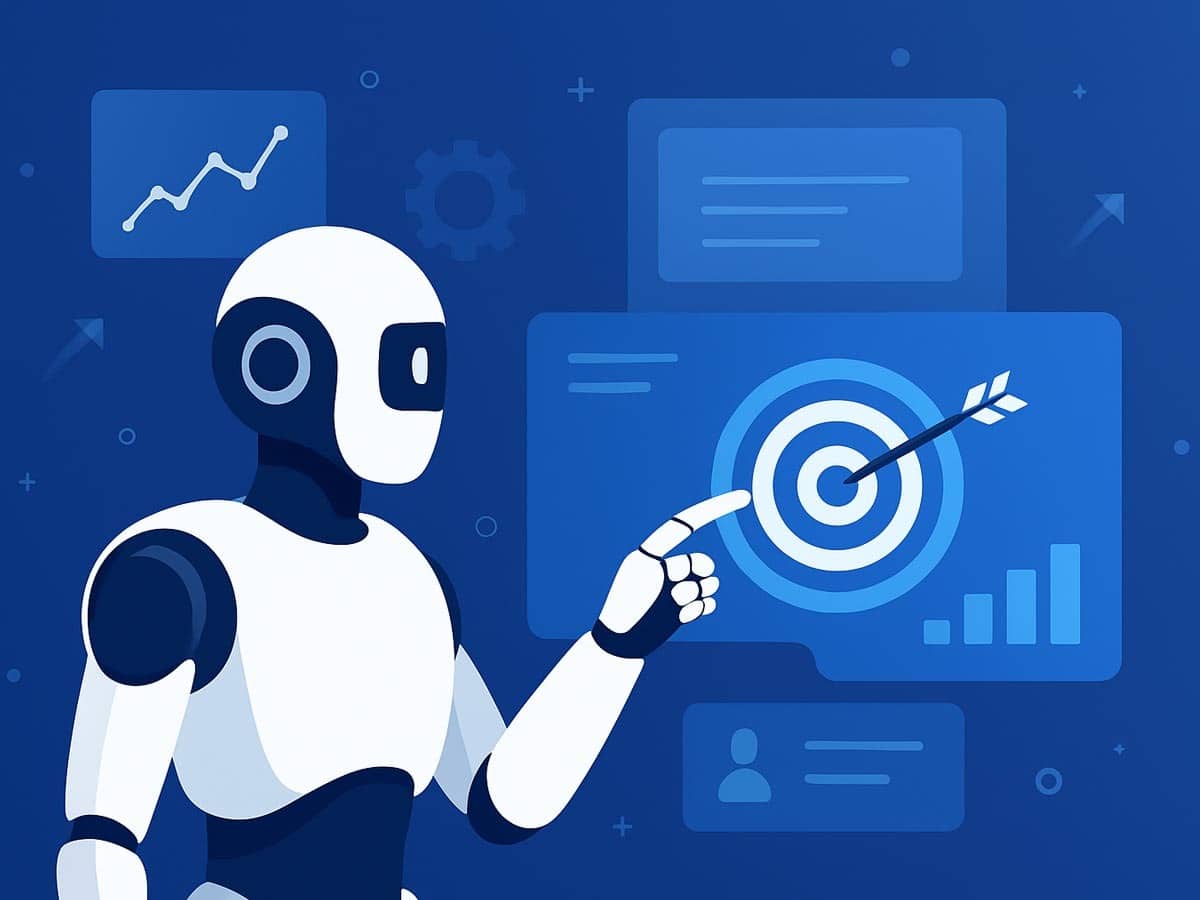
How Much Does It Cost to Develop an AI Agent in 2026?
-
Ankit Patel
2026 isn’t the year businesses are experimenting with AI anymore — it’s the year they’re building with it. Across industries, AI agents have quietly shifted from futuristic concepts to core… Read More
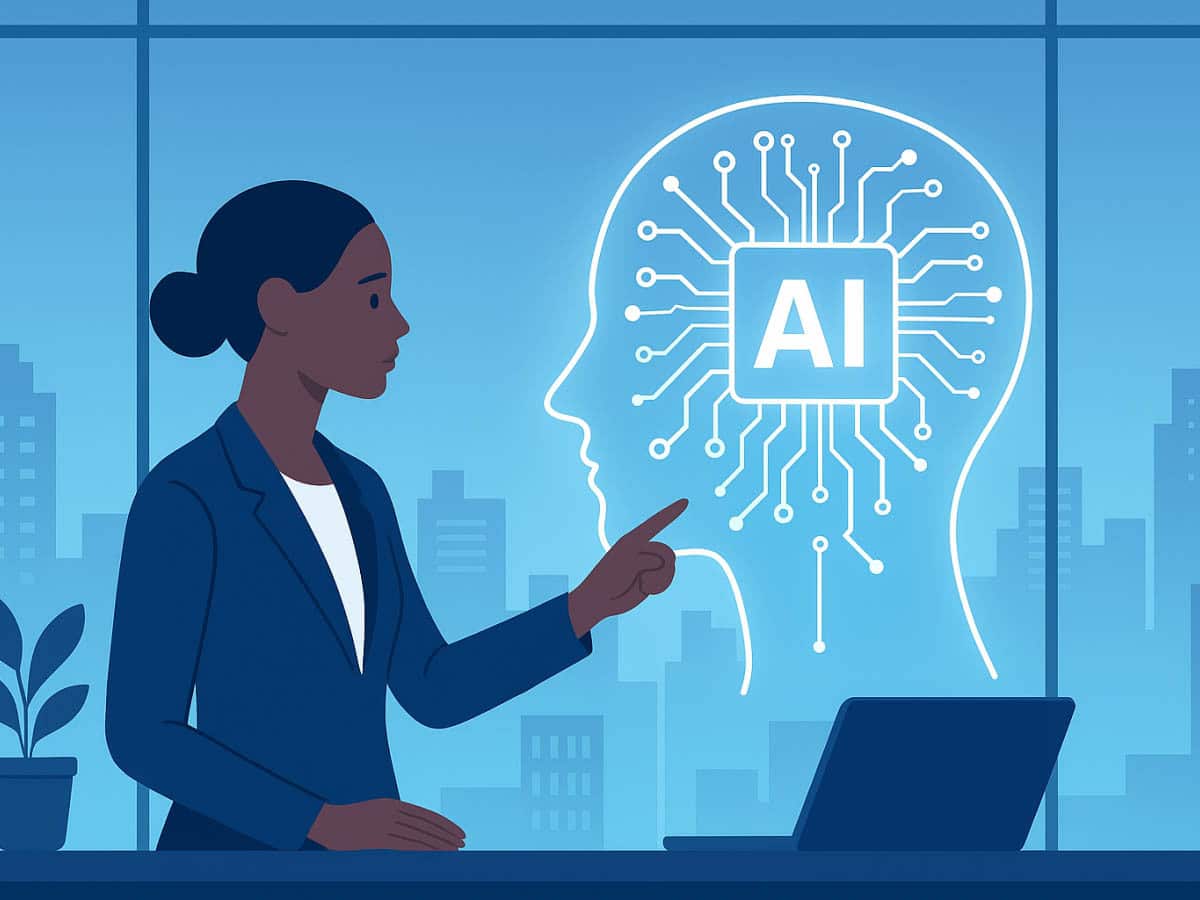
Generative AI Solutions: The Competitive Edge for Modern Enterprises
-
Jignesh Nakrani
The rules of business have changed. We’re no longer in a world where efficiency alone wins. In 2025, the enterprises that thrive are the ones that innovate faster, automate smarter,… Read More

